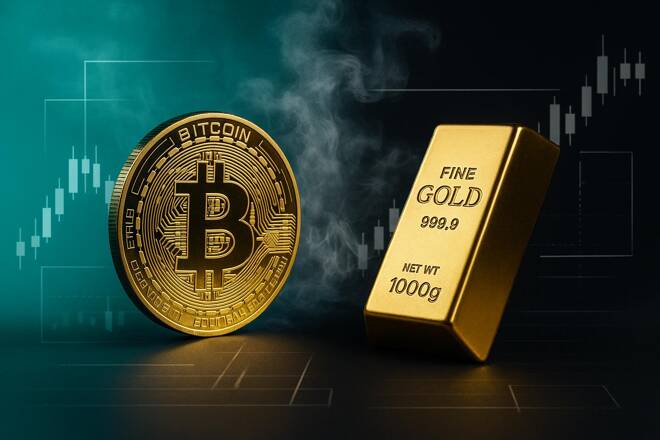As financial markets navigate a turbulent 2025, investors are reassessing the traditional boundaries between physical and digital stores of value. Gold, long regarded as a stable hedge during macroeconomic stress, has gained renewed attention amid global uncertainty. At the same time, Bitcoin continues to establish itself as a modern alternative, offering decentralization, liquidity, and long-term speculative upside. This delicate balance between caution and innovation has sparked a significant portfolio rotation, with capital flowing strategically between the two assets. The evolving trend underscores a deeper recalibration of risk tolerance, monetary confidence, and the future role of digital commodities in global finance.
A Market Searching for Stability
The year 2025 has brought a mix of geopolitical disruptions, inflationary pressures, and fluctuating interest-rate trajectories. In this environment, investors are gravitating toward assets that offer either guaranteed security or substantial upside potential. Gold, with its centuries-long track record, has once again emerged as a safe harbor. Its price has climbed steadily as global markets digest weaker growth forecasts and persistent currency volatility.
Bitcoin, however, represents a different kind of security—one built on decentralization, algorithmic scarcity, and independence from traditional financial systems. While volatility remains inherent to the asset class, Bitcoin’s resilience during recent market swings has positioned it as a compelling alternative hedge, especially for younger, digitally savvy investors.
Gold’s Enduring Role as a Safe Haven
Gold’s appeal in uncertain times is well established. Institutional investors have increased their holdings as central banks signal caution and energy markets undergo unpredictable shifts. Analysts attribute the renewed demand to its ability to preserve purchasing power when fiat currencies weaken.
This resurgence is also tied to increased acquisition by international reserves managers, who view gold as a buffer against economic fragmentation. For retail investors, the asset remains synonymous with reliability, especially when short-term risks overshadow long-term growth prospects.
Bitcoin’s Growing Reputation as Digital Gold
Despite its reputation for price swings, Bitcoin continues to mature. In 2025, it is perceived less as a speculative novelty and more as a digital commodity with utility beyond trading. Its fixed supply, transparent issuance schedule, and global accessibility make it particularly appealing in regions experiencing currency depreciation or capital restrictions.
Institutional participation has also grown. Major asset managers view Bitcoin as a complementary hedge rather than a replacement for gold, especially for portfolios seeking exposure to emerging digital economies. Its liquidity, 24-hour market structure, and integration into payment systems have amplified its relevance.
The Great Rotation: Portfolio Diversification Reimagined
The shift between gold and Bitcoin reflects more than macroeconomic stress; it signals a transformation in investor psychology. Rather than choosing between tradition and innovation, portfolios increasingly incorporate both assets. Gold provides defense, while Bitcoin offers asymmetric upside.
This dual-asset strategy has gained popularity among wealth managers aiming to stabilize returns while capturing opportunities in the expanding digital asset sector. The rotation also highlights a generational divide—older investors prioritize capital preservation, while younger cohorts embrace digital scarcity and decentralized finance.
Looking Ahead: A Dual-Asset Future
As 2025 unfolds, gold and Bitcoin are expected to coexist as complementary hedges rather than direct competitors. Gold will likely maintain its dominance during acute global crises, but Bitcoin’s expanding ecosystem positions it as an essential component of modern portfolios.
The evolving relationship between the two assets reflects a broader shift toward diversified risk management. Investors are no longer relying solely on conventional stores of value; instead, they are blending historical reliability with digital innovation to navigate an increasingly complex financial landscape.
